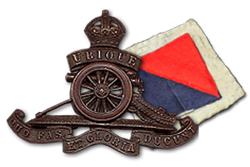4th Anti-Aircraft Division (United Kingdom)
| 1st Anti-Aircraft Division | |
|---|---|

Royal Artillery cap badge and AA patch
|
|
| Active | 1938–1942 |
| Country |
|
| Branch |
|
| Type | Anti-Aircraft Division |
| Role | Air Defence |
| Size | 2–5 Brigades |
| Part of |
Western Command (1938–39) Anti-Aircraft Command (1939–40) 2 AA Corps (1940–42) |
| Garrison/HQ | Chester |
| Engagements | The Blitz |
The 4th Anti-Aircraft Division (4 AA Division) was an air defence formation of Britain's Territorial Army, created in the period of tension before the outbreak of World War II. It defended North West England during the Blitz.
Increasing concern during the 1930s about the threat of air attack led to large numbers of units of the part-time Territorial Army (TA) being converted to anti-aircraft (AA) gun and searchlight roles in the Royal Artillery (RA) and Royal Engineers (RE), and higher formations became necessary to control them. One such formation was 4 AA Division, raised on 1 September 1938 in Western Command, with its Headquarters at Chester. The first General Officer Commanding (GOC) was Maj-Gen Hugh Martin.
The AA Divisions were unlike field formations: they were established to organise training and later exercise operational command in the static conditions of home defence, but relied entirely on the Home Forces commands for logistic support, supplies, and heavy repairs. They came under the operational control of RAF Fighter Command.
4 AA Division was initially responsible for the industrial areas of the North West and West Midlands of England and North and South Wales. At first it consisted of two brigades: the existing Liverpool-based 33rd (Western) AA Bde transferred from 2 AA Division and the newly formed 34th (South Midland) AA Bde based at Coventry. Shortly afterwards, 44th AA Bde was formed at Manchester. The division came under the control of Anti-Aircraft Command when that was formed in April 1939.
...
Wikipedia
